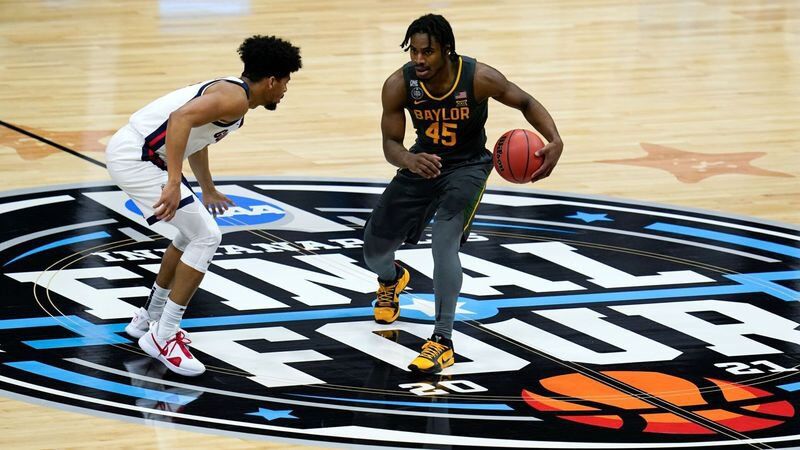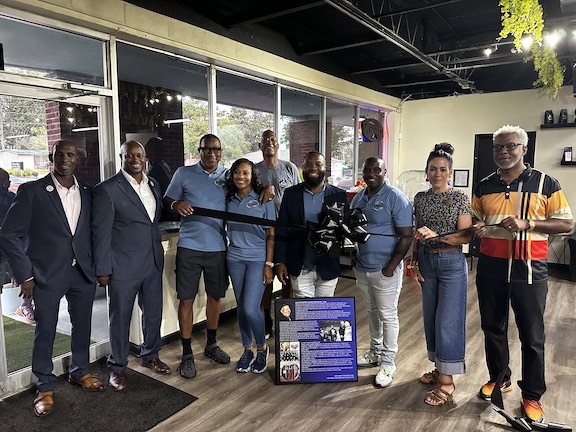As transfer market increases, coaches feeling heat to keep players
Published 11:32 am Tuesday, April 27, 2021

- Associated PressBaylor guard Davion Mitchell (45) drives around Gonzaga guard Aaron Cook, left, during the NCAA Tournament men's basketball final April 5 at Lucas Oil Stadium in Indianapolis.
Before the advent of the NCAA transfer portal, most college basketball coaches associated recruiting with spring and summer trips to AAU events or a visit to a cramped gym to watch the latest top high school prospect.
But a different type of recruiting has evolved as player movement has become more prevalent in the past five years. More than ever, college coaches are feeling the constant pressure of re-recruiting their own players.
Trending
“During this time where the portal is open, everybody is painting a picture of the grass being greener somewhere else,” said recently hired Indiana associate men’s basketball coach Dane Fife. “You get somebody that didn’t have a great year and doesn’t have the self confidence of betting on themselves, they’re ripe for the picking. Every program is dealing with it.”
The demand for transfers is high around the country because ready-made players have proven to be the latest path to success. Baylor won its first national title in program history in 2021 with five of the top eight players in its rotation as transfers from other schools, including All-American guard Davion Mitchell (Auburn), guard MaCio Teague (UNC-Asheville) and guard Adam Flager (Presbyterian). Of the combined 20 starters on Final Four teams, 40% (eight) were transfers.
Fife has witnessed the transfer market evolve during his 10-year stint as an assistant at Michigan State under Tom Izzo before coming to IU to work for new head coach Mike Woodson earlier this month. The instantaneous communication following a game on social media can shape player attitudes during an emotional moment as well. One game in which a player doesn’t get enough shot attempts or minutes off the bench can create feelings of wanderlust.
“It’s so easy to get sidetracked, to get distracted, with social media and people just constantly pecking at you, if you don’t have your circle tight,” Fife said. “But that’s on the staff, too. We’ve got to look for signs. We’ve got to be investigators. We’ve got to be almost FBI, to know what’s being thrown in these kids’ faces and going in their ears.”
The uptick in transfer portal entries this year can partly be attributed to two factors. First, the NCAA last year offered all student-athletes relief in the form of an additional year of eligibility, regardless of classification.
Second, the NCAA’s Division I Council this month adopted transfer legislation that would give Division I student-athletes the chance to transfer one time without having to sit out for a year, per previously established NCAA legislation.
Trending
The Division I Board of Directors is scheduled to meet April 28, where the newly adopted legislation is expected to be ratified by the Division I Board of Directors.
The result from these factors has made for an overactive transfer portal roster for teams across the country. 247Sports national college football writer Chris Hummer has closely followed these developments.
According to Hummer, as of Thursday, 1,415 basketball student-athletes were in the transfer portal since Aug. 1, 2020. Comparatively, during the 2019-20 cycle 1,032 student-athletes entered the portal. In 2018-19, 1,066 student-athletes did so.
“I think that’s emboldened a lot of players to kind of explore their options, who might not have in the past,” Hummer said during a call with CNHI Sports.
Not long after Penn State’s 2020-21 men’s basketball season ended, seven Nittany Lions entered their names into the portal just one day after first-year head coach Micah Shrewsberry was hired.
Convincing those players – who included Penn State’s top four scorers from last season – was one of Shrewsberry’s priorities once accepting the position.
“I talked to every single one of the guys who have entered (the transfer portal), and we are actively trying to get them back,” Shrewsberry said during his introductory press conference. “We’re talking about them – we’re talking to them. We’re having conversations face-to-face, over Zoom, on FaceTime.”
Shrewsberry was partially successful in those efforts, as John Harrar (8.8 points per game) and Seth Lundy (10.1 points per game) withdrew their names and returned to the program. Five players, however, found new homes in Myreon Jones (Florida), Jamari Wheeler (Ohio State), Trent Buttrick (Massachusetts) and Patrick Kelly (Fordham).
Izaiah Brockington announced his exit from the transfer portal last month, but Thursday, he was reported to have re-entered.
Woodson was able to convince a handful of IU players to return who were in the portal, including point guard Khristian Lander, forward Race Thompson, forward Jordan Geronimo and guard Parker Stewart. Guard Al Durham and center Joey Brunk left as grad transfers, while sophomore guard Armaan Franklin left for Virginia.
Fife said it will be important going forward for IU coaches to keep the lines of communication open with players, and teammates play an important role as well.
“If you don’t know a teammate is struggling, then you’ve really got your head in the sand as much as a coach does,” Fife said. “Here we’ve got to preach teammate support, too. If you feel you can’t get through to a teammate as a player, you’ve got to talk to the staff and let them know that a teammate is struggling. That’s as important as anything.”
Still, the byproduct of recent eligibility and transfer changers will force coaches to be more cognizant in trying to keep players satisfied with playing time and their roles on their respective squads.
“When you’d get (players) in, coaches used to feel they had a year or two to kind of mold them and de-recruit them in a way – coach them a little tougher, a little bit more tough love – because there was no threat of that player potentially leaving right away,” Hummer said.
With no requirement to sit for a season, unhappy players are free to look elsewhere for what they feel will be a better fit.
“Coaches are well-aware that if you don’t manage your roster from the start, if you aren’t checking on these guys, if you aren’t potentially playing them earlier or maybe giving them a look that you might not have in the past, they can easily leave,” Hummer explained. “I’m seeing a lot of the times now that kids from this recruiting cycle walk out after a few months if they’re not comfortable. It’s a different era, and coaches have to be really cognizant of their players’ feelings and have to really massage them. They have to make the time to make those conversations happen about how players feel and what they feel about their place on the roster. Otherwise, they do risk losing players.”





